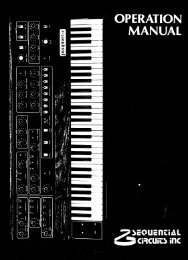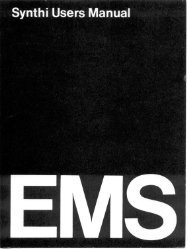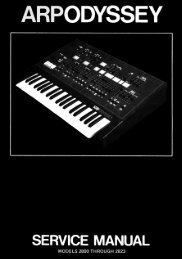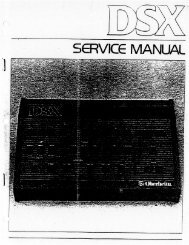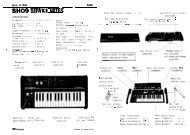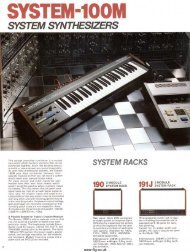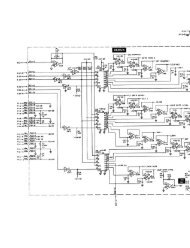ARP2600 - Fundamentals of Music Technology - Cyborgstudio.com
ARP2600 - Fundamentals of Music Technology - Cyborgstudio.com
ARP2600 - Fundamentals of Music Technology - Cyborgstudio.com
Create successful ePaper yourself
Turn your PDF publications into a flip-book with our unique Google optimized e-Paper software.
SECTION EIGHT: THE VCA - 065increased, then decreased from the initial gain setting. In this way, it is similar to the effect <strong>of</strong> negativecontrol voltage on the VCF’s cut<strong>of</strong>f frequency. However, there are very few practical applications <strong>of</strong>this design, since it means that sound is constantly flowing through the VCA, regardless <strong>of</strong> whether akey is being played. Over time, this design disappeared. Almost without exception, modern VCA’s willonly increase gain when responding to in<strong>com</strong>ing control signals.LINEAR VS. EXPONENTIALIn Figure 8-1 on page 62, one can see that the two control inputs on the VCA have a small label overthem that says control. The left jack, which is normalled to the AR generator, is also labeled LINEAR,while the right jack, normalled to the ADSR generator, is labeled EXPONENTIAL. Although manyearly synthesizers <strong>of</strong>fered one or the other, the ARP 2600 was among the select few that <strong>of</strong>fered usersboth response curves.Volume is typically measured in a unit called decibels or dB. One dB is the smallest change in volumethat a person can perceive. Although people can hear volumes much louder, 140 dB is considered to bethe threshold <strong>of</strong> pain, or the volume at which a sound is so loud, it is painful to hear. 1 dB is the s<strong>of</strong>testsound that human ears can hear. One might think that in order to create a sound which is twice as loudas a 50 dB sound, one would just double the voltage being fed to the VCA. However, human ears do notrespond in the way that one might think. The decibel is not a linear measurement. Although the decibelscale increases smoothly upwards in a straight line (the blue line in Figure 8-3), the amount <strong>of</strong> soundenergy it takes to produce those sounds does not (the red line in Figure 8-3). In fact, a 20 dB sound isactually ten times as intense as a 10 dB sound. A 30 dB sound is actually one hundred times as intenseas a 10 dB sound, and a 40 dB sound is actually one thousand times as intense as a 10 dB sound.Perceived loudness in dBWhen it takes increasingly large amounts <strong>of</strong> volume toproduce the same amount <strong>of</strong> perceived change, this iscalled an exponential response. Human ears function inthis way. Sometimes, it is advantageous to have an amplifierwhich functions in a linear mode, and sometimesit is advantageous to have an amplifier that functions inexponential mode. The ARP 2600 gives the user bothoptions.When the linear control input <strong>of</strong> the VCA is used, volumeswill seem to change smoothly over the course <strong>of</strong>Actual amount <strong>of</strong> voltagethe envelope or whatever is controlling the VCA’s amplitude.While using the linear input, it does not take asFigure 8-3: A linear and a logarithmic curve much voltage to create a change in gain, especially atlower levels. When the exponential input is used to controlthe VCA, the changes in amplitude will be more dynamic and certain elements <strong>of</strong> an envelope willseem exaggerated (most notably the decay). If a waveform which is naturally smaller in amplitude isused (e.g. a sine or triangle wave) little change may be heard using the exponential input. The differencebetween the two control inputs can be heard on CD track 43




